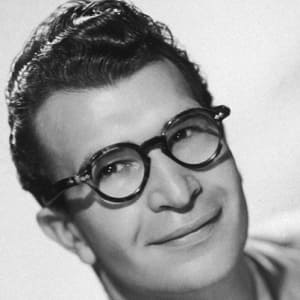
Jacques Cartier
French explorer Jacques Cartier is known chiefly for exploring the St. Lawrence River and giving Canada its name.
Synopsis
French navigator Jacques Cartier was born on December 31, 1491, in Saint-Malo, Brittany, France, and was sent by King Francis I to the New World in search of riches and a new route to Asia in 1534. His exploration of the St. Lawrence River allowed France to lay claim to lands that would become Canada. He died in Saint-Malo in 1557.
First Major Voyage to North America
Born in Saint-Malo, France on December 31, 1491, Jacques Cartier reportedly explored the Americas, particularly Brazil, before making three major North American voyages. In 1534, King Francis I of France sent Cartier—likely because of his previous expeditions—on a new trip to the eastern coast of North America, then called the "northern lands." On a voyage that would add him to the list of famous explorers, Cartier was to search for gold and other riches, spices, and a passage to Asia.
Cartier sailed on April 20, 1534, with two ships and 61 men, and arrived 20 days later. He explored the west coast of Newfoundland, discovered Prince Edward Island and sailed through the Gulf of St. Lawrence, past Anticosti Island.
Second Voyage
Upon returning to France, King Francis was impressed with Cartier’s report of what he had seen, so he sent the explorer back the following year, in May, with three ships and 110 men. Two Indians Cartier had captured previously now served as guides, and he and his men navigated the St. Lawrence, as far as Quebec, and established a base.
In September, Cartier sailed downriver to what would become Montreal and was welcomed by the Iroquois who controlled the area, hearing from them that there were other rivers that led farther west, where gold, silver, copper and spices could be found. Before they could continue, though, the harsh winter blew in, rapids made the river impassable, and Cartier and his men managed to anger the Iroquois.
So Cartier waited until spring, when the river was free of ice, and captured some of the Iroquois chiefs before again returning to France. Because of his hasty escape, Cartier was only able to report to the king that untold riches lay farther west and that a great river, said to be about 2,000 miles long, possibly led to Asia.
Third Voyage
In May of 1541, Cartier departed on his third voyage with five ships. He had by now abandoned the idea of finding a passage to the Orient, and was sent to establish a permanent settlement along the St. Lawrence River on behalf of France. A group of colonists was a few months behind him this time.
Cartier set up camp again near Quebec, and they found an abundance of what they thought were gold and diamonds. In the spring, not waiting for the colonists to arrive, Cartier abandoned the base and sailed for France. En route, he stopped at Newfoundland, where he encountered the colonists, whose leader ordered Cartier back to Quebec. Cartier, however, had other plans; instead of heading to Quebec, he sneaked away during the night and returned to France.
There, his "gold" and "diamonds" were found to be worthless, and the colonists abandoned plans to found a settlement, returning to France after experiencing their first bitter winter. After these setbacks, France didn’t show any interest in these new lands for half a century, and Cartier’s career as a state-funded explorer came to an end. While credited with the exploration of the St. Lawrence region, Cartier's reputation has been tarnished by his dealings with the Iroquois and abandonment of the incoming colonists as he fled the New World.
Related Videos
Ferdinand Magellan – Mini Biography(TV-14; 2:11)
John Cabot – Mini Biography(TV-14; 2:33)
Samuel de Champlain – Mini Biography(TV-14; 3:00)
Vasco de Gama – Mini Biography(TV-14; 3:26)




